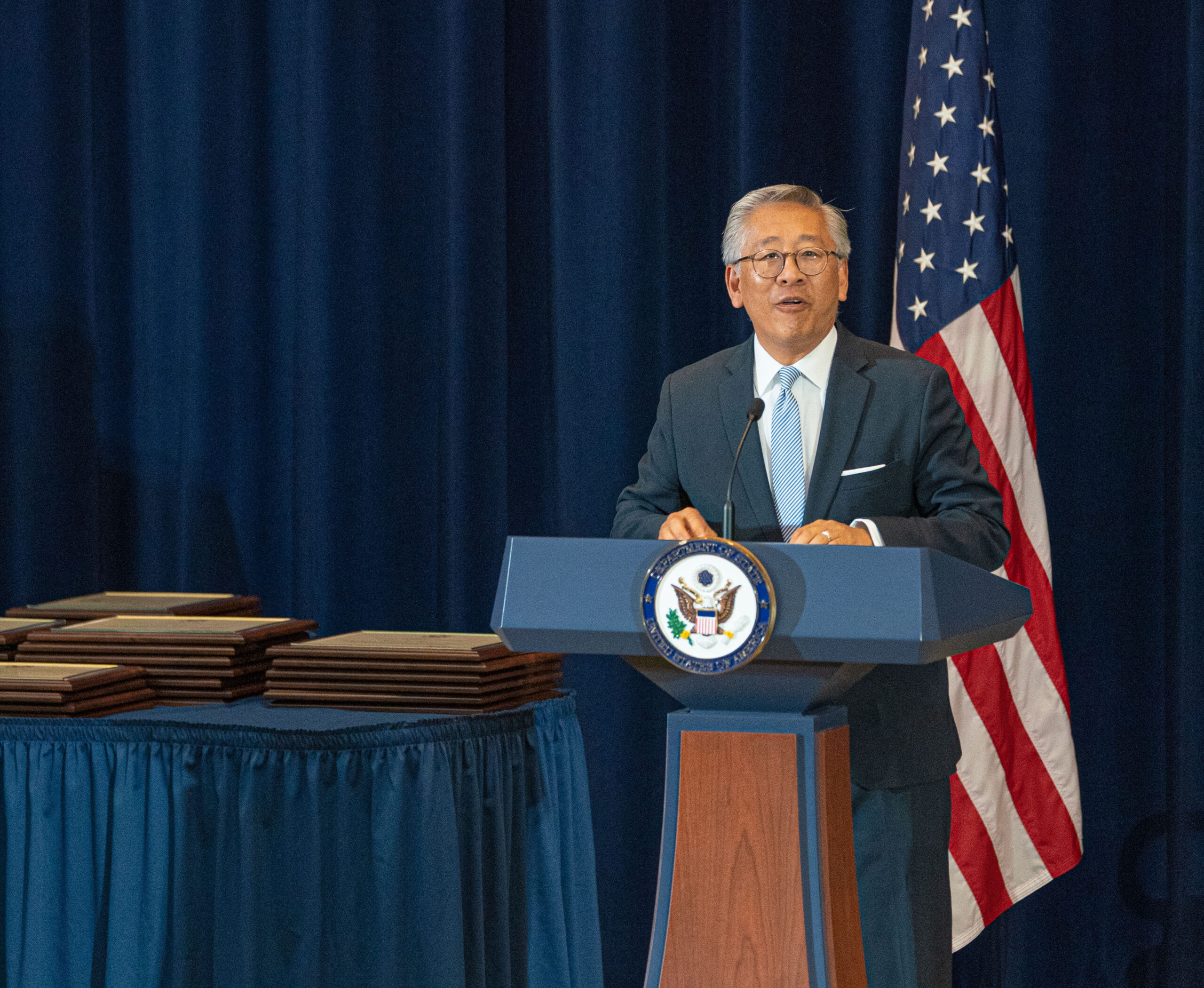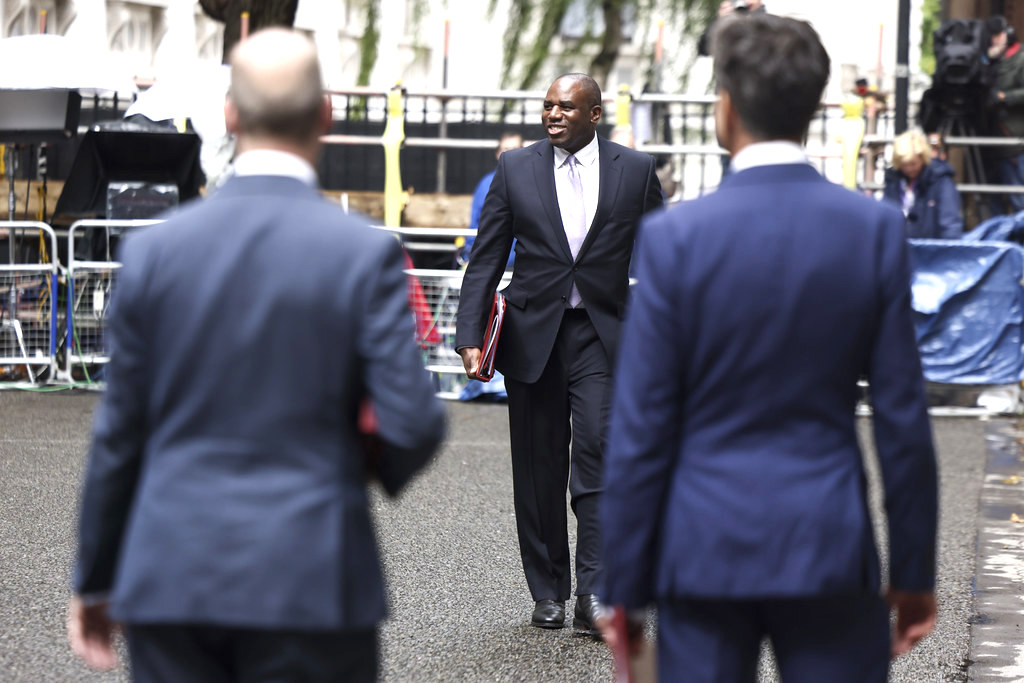India is now flanked on the west and the east by two unfriendly regimes that are under U.S. influence, writes M.K. Bhadrakumar.

Protesters hold victory march in Dhaka after Sheikh Hasina’s resignation on Aug. 5. (Rayhan9d, Wikimedia Commons, CC BY-SA 4.0)
By M.K. Bhadrakumar
Indian Punchline
 The exclusive report in the Aug. 11 Economic Times carrying Sheikh Hasina’s first remarks after her ouster from power must have come as a slap on the face of the nincompoops in India who are waxing eloquently about developments in her country, Bangladesh, as a stand-alone democracy moment in regional politics.
The exclusive report in the Aug. 11 Economic Times carrying Sheikh Hasina’s first remarks after her ouster from power must have come as a slap on the face of the nincompoops in India who are waxing eloquently about developments in her country, Bangladesh, as a stand-alone democracy moment in regional politics.
“I resigned, so that I did not have to see the procession of dead bodies. They wanted to come to power over the dead bodies of students, but I did not allow it, I resigned from premiership. I could have remained in power if I had surrendered the sovereignty of Saint Martin Island and allowed America to hold sway over the Bay of Bengal. I beseech to the people of my land, ‘Please do not allow to be manipulated by radicals.’”
#LeadStoryOnET | #Hasina alleges #US role in ouster, says she was #dethroned over sovereignty of #StMartinIslandhttps://t.co/5m3KNaspPV
— Economic Times (@EconomicTimes) August 11, 2024
The ET report, citing Awami League sources, implied that the hatchet man of the colour revolution in Bangladesh is none other than Donald Lu, the incumbent assistant secretary of state for South and Central Asian affairs who visited Dhaka in May.
This is credible enough. A background check on Lu’s string of postings gives away the story.
This Chinese-American “diplomat” served as a political officer in Peshawar (1992 to 1994); special assistant to Ambassador Frank Wisner (whose family lineage as operatives of the Deep State is well-known) in Delhi (1996-1997); subsequently, as the deputy chief of mission in Delhi from 1997-2000 (during which his portfolio included Kashmir and India-Pakistan relations), inheriting the job, curiously enough, from Robin Raphel, whose reputation as India’s bête noire is still in living memory — C.I.A. analyst, lobbyist and “expert” on Pakistan affairs.
Indeed, Lu visited Bangladesh in mid-May and met with senior government officials and civil society leaders. And shortly after his visit, the U.S. announced sanctions against then Bangladesh Army chief General Aziz Ahmed for what Washington termed his involvement in “significant corruption.”
After his Dhaka visit, Lu told Voice of America openly,
“Promoting democracy and human rights in Bangladesh remains a priority for us. We will continue to support the important work of civil society and journalists and to advocate for democratic processes and institutions in Bangladesh, as we do in countries around the world…
“We [the U.S.] were outspoken in our condemnation of the violence that marred the election cycle [in January] and we have urged the government of Bangladesh to credibly investigate incidents of violence and hold perpetrators accountable. We will continue to engage on these issues…”

Lu addressing State Department employees in 2022. (State Department, Freddie Everett/ Public domain)
Lu played a similar proactive role during his past assignment in Kyrgyzstan (2003-2006) which culminated a colour revolution. Lu specialised in fuelling and masterminding colour revolutions, which led to regime changes in Albania, Georgia, Azerbaijan, Kyrgyzstan and Pakistan (in the ouster of Imran Khan).
[See: US Urged Ouster of Khan, Cable Shows]
Sheikh Hasina’s disclosure could not have come as surprise to the Indian intelligence. In the run-up to the elections in Bangladesh in January, the Russian Foreign Ministry openly alleged that U.S. diplomacy was changing tack and planning a series of events to destabilise the situation in Bangladesh in the post-election scenario,
The Foreign Ministry spokesperson said in a statement in Moscow,
“On December 12-13, in a number of areas of Bangladesh, opponents of the current government blocked road traffic, burned buses, and clashed with the police. We see a direct connection between these events and the inflammatory activity of Western diplomatic missions in Dhaka. In particular, US Ambassador P Haas, which we already discussed at the briefing on November 22.
Haas, on right, presenting his credentials to Bangladesh President Abdul Hamid at Bangabhaban, the presidential palace, on March 15, 2022. (U.S. Embassy Dhaka, Wikimedia Commons, CC BY-SA 4.0)
“There are serious reasons to fear that in the coming weeks an even wider arsenal of pressure, including sanctions, may be used against the government of Bangladesh, which is undesirable to the West. Key industries may come under attack, as well as a number of officials who will be accused without evidence of obstructing the democratic will of citizens in the upcoming parliamentary elections on January 7, 2024.
“Unfortunately, there is little chance that Washington will come to its senses and refrain from yet another gross interference in the internal affairs of a sovereign state. We are confident, however, that despite all the machinations of external forces, the issue of power in Bangladesh will ultimately be decided by the friendly people of this country, and no one else.”

U.S. Defense Secretary Lloyd Austin with Indian External Affairs Minister Subrahmanyam Jaishankar at the Pentagon on Sept. 26, 2022. (DoD/Alexander Kubitza)
Moscow and Beijing have nonetheless taken a scrupulously correct stance of non-interference. True to Russian pragmatism, Moscow’s Ambassador to Bangladesh Alexander Mantytsky noted that his country “will cooperate with any leader and government elected by the people of Bangladesh who is ready for equal and mutually respectful dialogue with Russia.”
That said, both Russia and China must be worried about U.S. intentions. Also, they cannot but be skeptical about the shape of things to come, given the abysmal record of U.S. client regimes catapulted to power through colour revolutions.
Unlike Russia, which has economic interests in Bangladesh and is a stakeholder in the creation of a multipolar world order, the security interests of China and India are going to be directly affected if the new regime in Dhaka fails to deliver and the country descends into economic crisis and lawlessness as a failed state.
It is a moot point, therefore, whether this regime change in Dhaka masterminded by Washington is “India-centric” or not. The heart of the matter is that today, India is flanked on the west and the east by two unfriendly regimes that are under U.S. influence.
And this is happening at a juncture when signs are plentiful that the government’s independent foreign policies and stubborn adherence to strategic autonomy has upset the U.S.’ Indo-Pacific strategy.
The paradox is, the colour revolution in Bangladesh was set in motion within a week of the ministerial level Quad meeting in Tokyo, which was, by the way, a hastily-arranged U.S. initiative too. Possibly, the Indian establishment was lulled into a sense of complacency?
British Foreign Secretary David Lammy reached out to External Affairs Minister S. Jaishankar with a phone call on Aug. 8 coinciding with the appointment of the interim government in Dhaka, which the U.K. has welcomed while also urging for “a peaceful pathway to an inclusive democratic future” for Bangladesh — much as the people of that country deserve “accountability” [emphasis added]”

U.K. Foreign Secretary David Tammy outside the prime minister’s office in London on July 6. (Simon Dawson / No 10 Downing Street, CC BY-NC-ND 2.0)
India is keeping mum. The only way Bangladesh can figure a way out of the foxhole is through an inclusive democratic process going forward.
But the appointment, ostensibly at the students’ recommendation, of a U.S.-educated lawyer as the new chief justice of the Supreme Court in Dhaka is yet another ominous sign of Washington tightening its grip.
Against this geopolitical backdrop, a recent commentary in the Chinese daily Global Times, “China-India relations easing, navigating new realities“ gives some food for thought.
It spoke of the imperative for India and China “to create a new kind of relationship that reflects their status as major powers… Both countries should welcome and support each other’s presence in their respective neighbouring regions.”
Or else, the commentary underscored, “the surrounding diplomatic environment for both countries will be difficult to improve.”
The regime change in Bangladesh bears testimony to this new reality.
The bottom line is that while on the one hand, Indians bought into the U.S. narrative that they are a “counterweight to China,” in reality, the U.S. has begun exploiting India-China tensions to keep them apart with a view to advance its own geopolitical agenda of regional hegemony.
Delhi should take a strategic overview of where its interests would lie in this paradigm shift, as the usual way of thinking about or doing something in our neighbourhood is brusquely replaced by a new and different experience that Washington has unilaterally imposed.
What we may have failed to comprehend is that the seeds of the new paradigm were already present within the existing one.
M.K. Bhadrakumar is a former diplomat. He was India’s ambassador to Uzbekistan and Turkey. Views are personal.
This article originally appeared on Indian Punchline.
The views expressed are solely those of the author and may or may not reflect those of Consortium News.


Where are you the useful idiots? A food for thought if you read the article.
“We will coup whoever we want! Deal with it.” — Elon Musk wrt Bolivia and Evo Morales
I’ve long expected the US to turn on India.
The US empire sowing chaos everywhere to maintain its waning power. How do we stop this run away train?
¿How stop it?
Protest Loudly!!